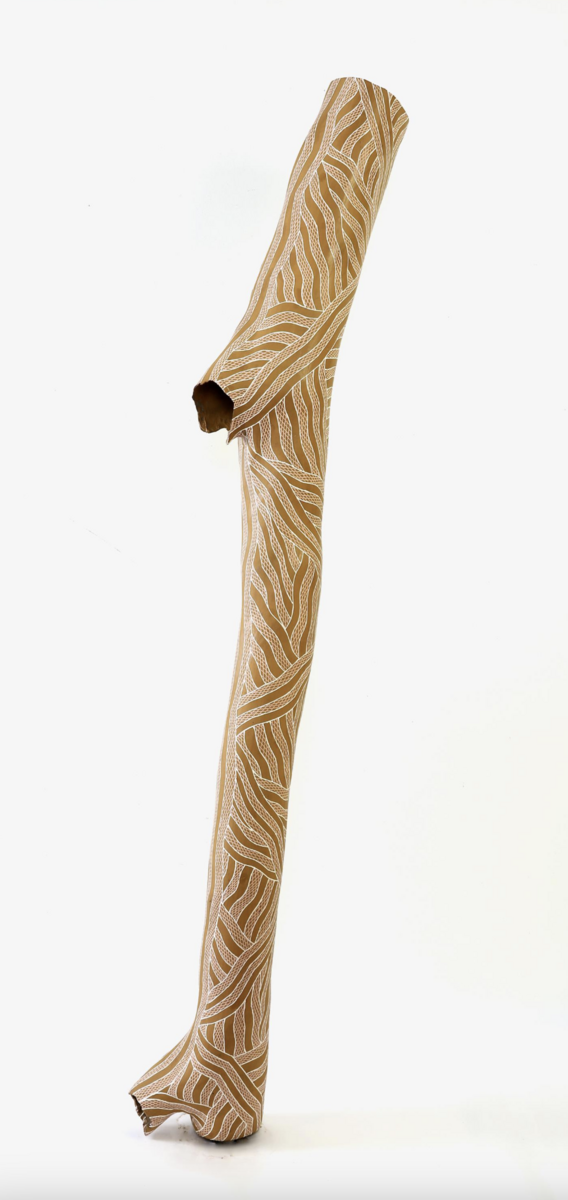Larrakitj memorial poles + bark paintings
Sophie Gannon Gallery
08 Aug 2024 – 24 Aug 2024

To view details of individual works, either download the pdf catalogue below or feel free to contact the gallery on (03) 9421 0857.
Manini Gumana is a female Yolŋu artist from North East Arnhem Land. She lives full time at one of the most remote homelands in Arnhem Land. Her home at Gäṉgan is only accessible by road during the Dry season. It is four hours drive on a rough dirt track from the nearest town. It is a collection of about ten houses completely surrounded by Stringybark forest.
But the topic of her art is the coastal area known as Garrapara which is another hours drive from Gäṉgan. Garrapara is in the far north western corner of Blue Mud Bay. The coded design for this place points literate viewers to the memorised text of lengthy epic song poems which describe the creation of the coast and the event which occurred here in the ancestral past/present/future.
The zigzag design captures the rough choppy sea caused by the winds of Bulunu blowing from down South in the months of May to October. It reveals the origin of the various bays as shaped by the giant Queenfish biting chunks from the landscape as it launched itself at tiny baitfish in the shallows.
The full epic of the manikay (sacred song) describes the death by drowning of two hunters after a massive tidal surge swamped their canoe and flooded inland for tens of kilometres. This event sets up the mortuary ceremonies for the saltwater Dhalwaŋu clan around the creation of a canoe shaped sand sculpture known as Yiŋapuŋapu. This site is also a sanctified location for the dispute resolution ceremony known as Makarrata.
Gäṉgan is possibly one of the most intensely dense concentrations of famous artists on the planet. A tiny hamlet in the deep forest has generated many award winning artists, including Gunybi Ganambarr, Djirrirra Wunuŋmurra, Dr. Gawirriṉ Gumana AO, Nawurapu Wunuŋmurra, Yaŋgarriny Wunuŋmurra and Manini’s husband Garawan Waṉambi.
Each of these artist make very different work and only Manini has concentrated on the waters of Garrapara. Another distinguishing feature of her work is the delicate mixing of ochres into subtle pastel combinations of pink, grey and cream. This understated palette is made solely from the red, black and yellow rocks which are the base of all Yolŋu painting. The grace of her ‘feminine’ tones are unique amongst her peers.

Manini GumanaGarrapara (1817-24) 2024Natural earth pigments on stringy bark95 x 30 cm$3,000.00
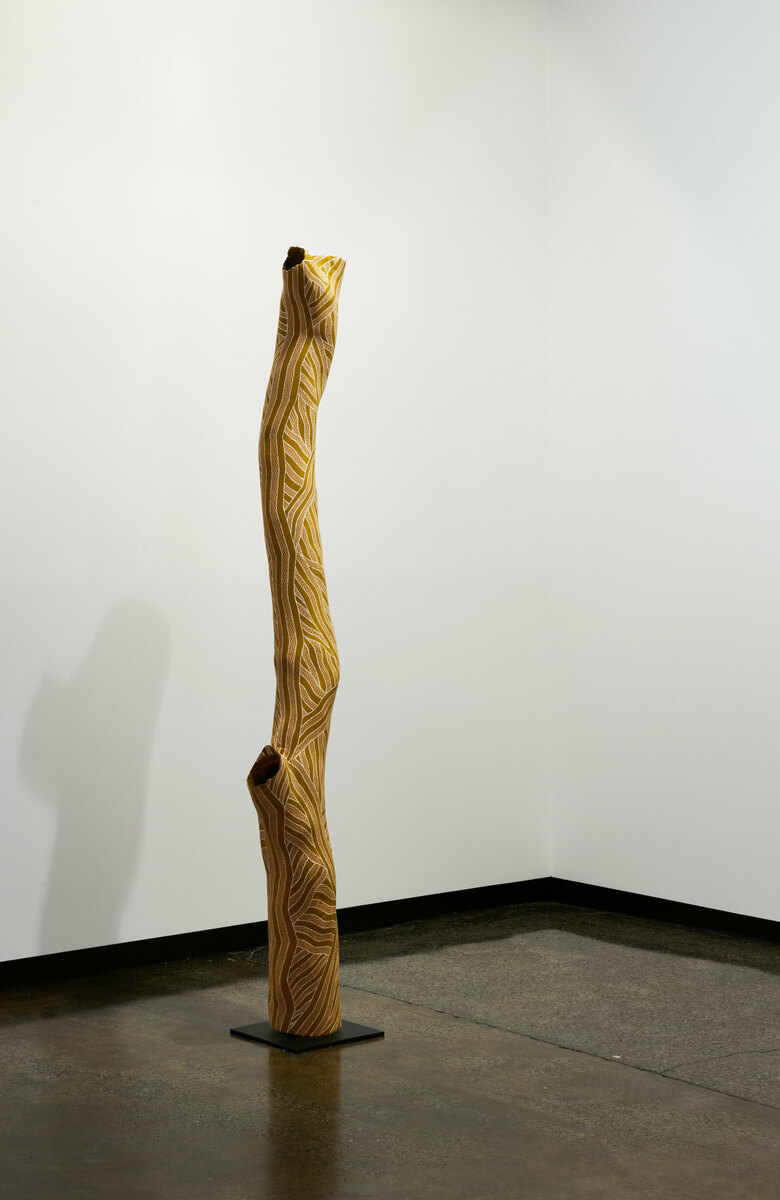
Manini GumanaGarrapara (712-23) 2022Natural earth pigments on stringy bark pole211 x 30 cm$9,300.00
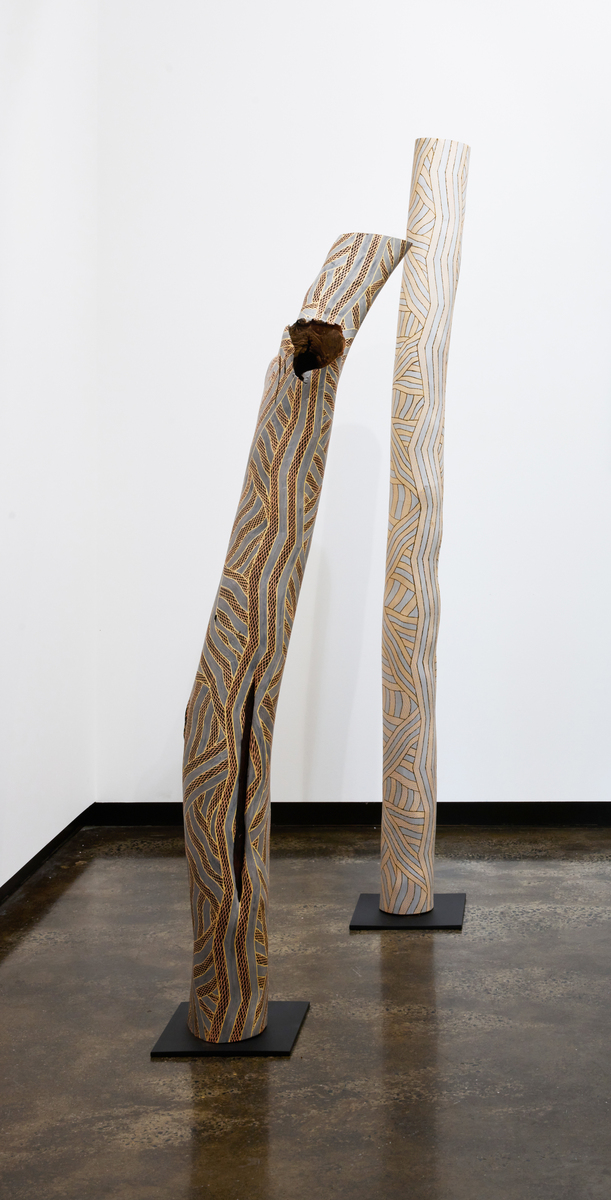
Manini GumanaFrom Left to Right: Garrapara (1178-24), (643-24) Natural earth pigments on stringy bark pole211 x 30 cm
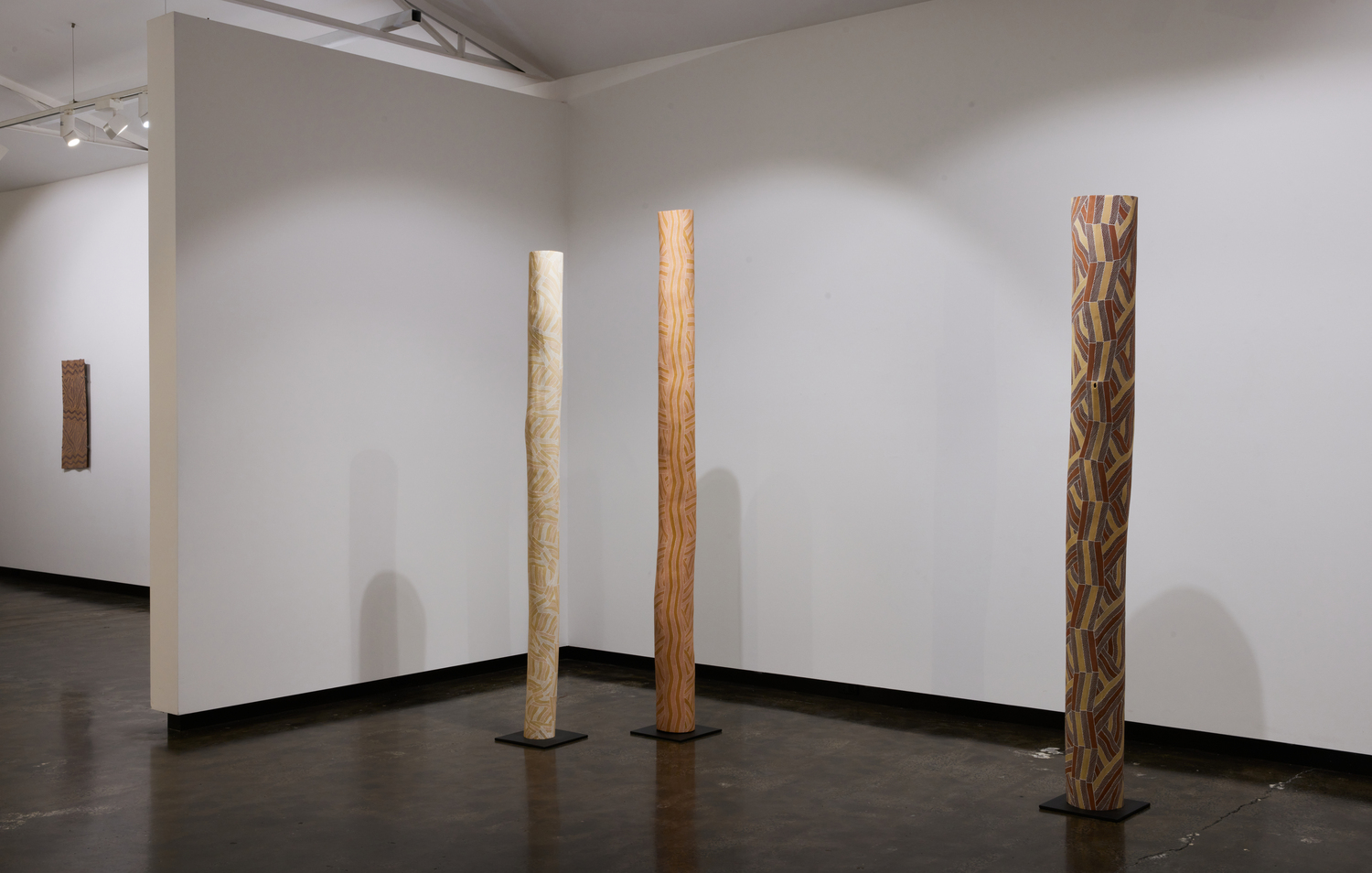
Manini GumanaFrom Left to Right: Garrapara (3819-23), (1244-22), (1821-23) Natural earth pigments on stringy bark pole211 x 30 cm

Manini GumanaFrom Left to Right: Garrapara (5569-23), (4209-22), (9423-22), (4815-23) Natural earth pigments on stringy bark pole211 x 30 cm
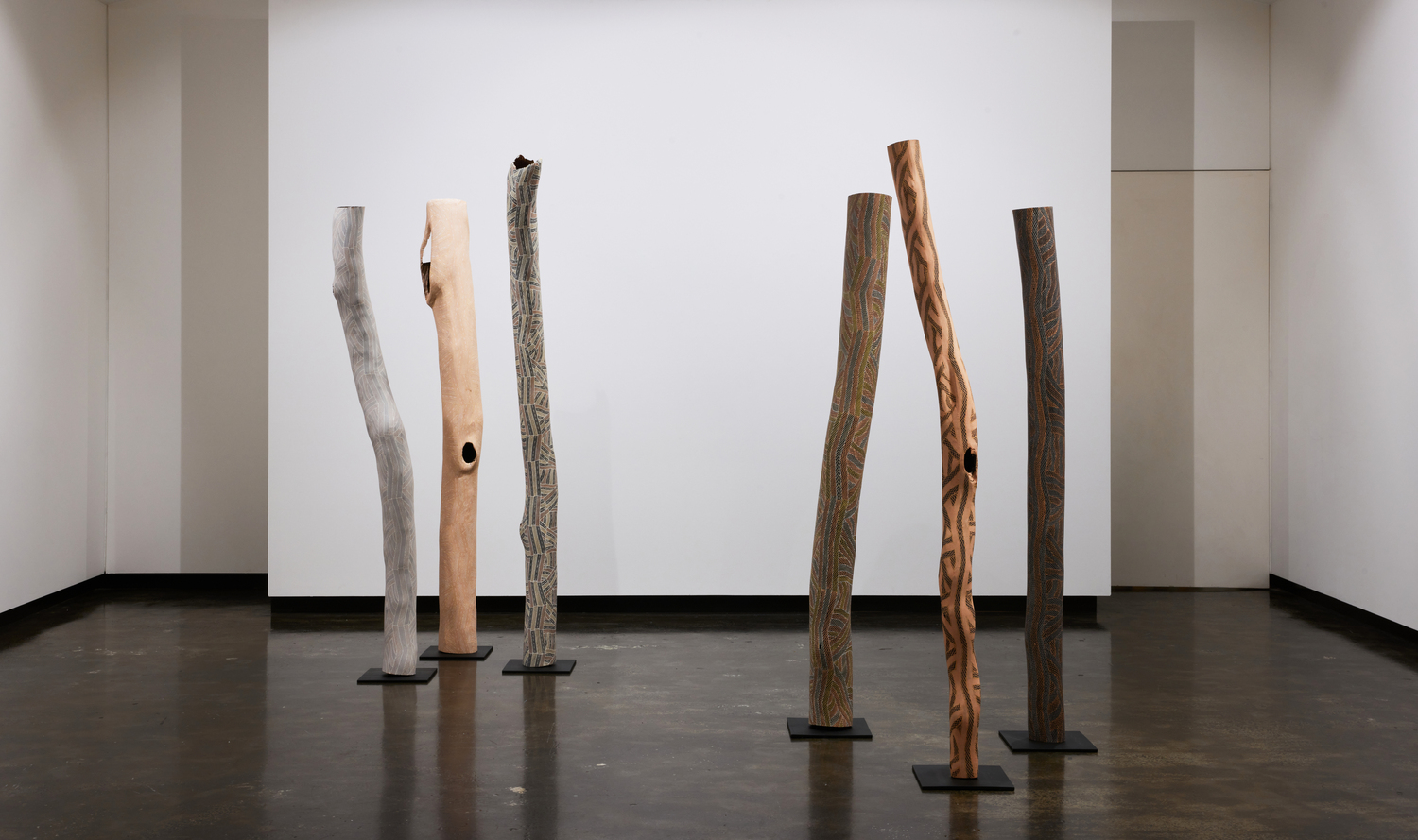
Manini GumanaFrom Left to Right: Garrapara (6108-23), (3820-23), (4612-23), (725-24), (7413-23), (1289-24) Natural earth pigments on stringy bark pole211 x 30 cm
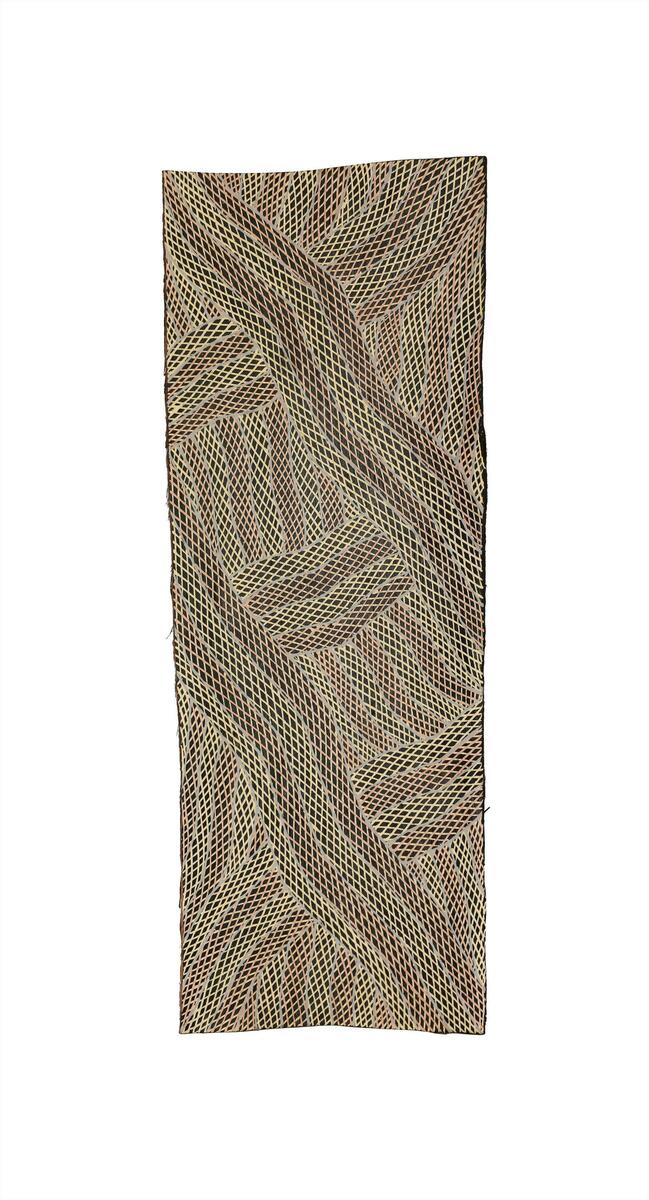
Manini GumanaGarrapara (1057-24) 2024Natural earth pigments on stringy bark65.5 x 24.5 cm●●
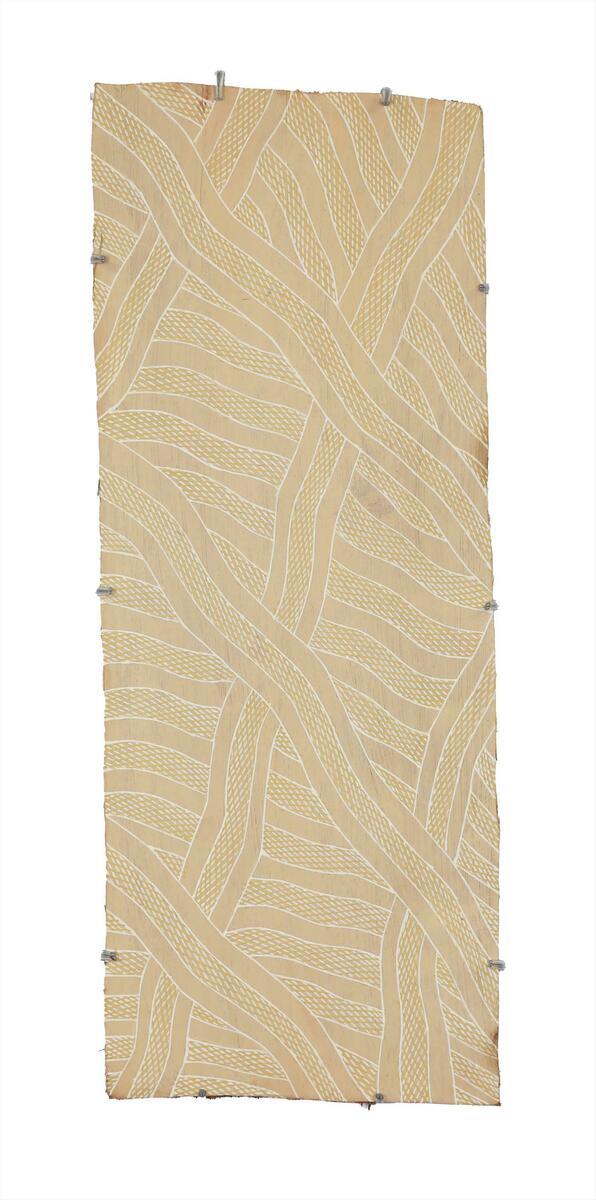
Manini GumanaGarrapara (3000-23) 2023Natural earth pigments on stringy bark75 x 29 cm$2,500.00
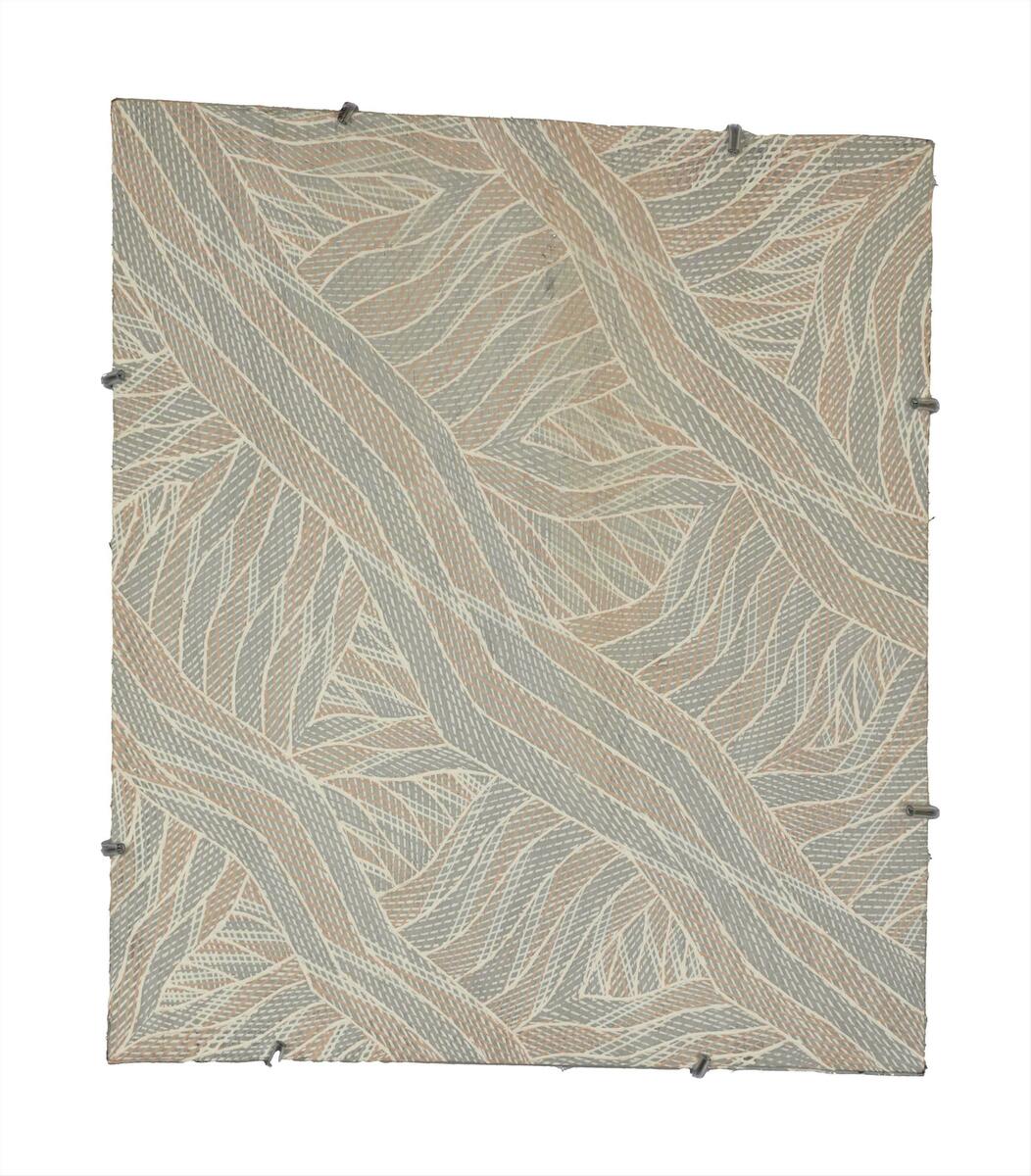
Manini GumanaGaraparra (3347-24) 2024Natural earth pigments on stringy bark50.5 x 43 cm$2,500.00

Manini GumanaGarrapara (1321-21) 2021Natural earth pigments on stringy bark84 x 36 cm$3,200.00

Manini GumanaGarrapara (3348-24) 2024Natural earth pigments on stringy bark60 x 37.5 cm$2,200.00
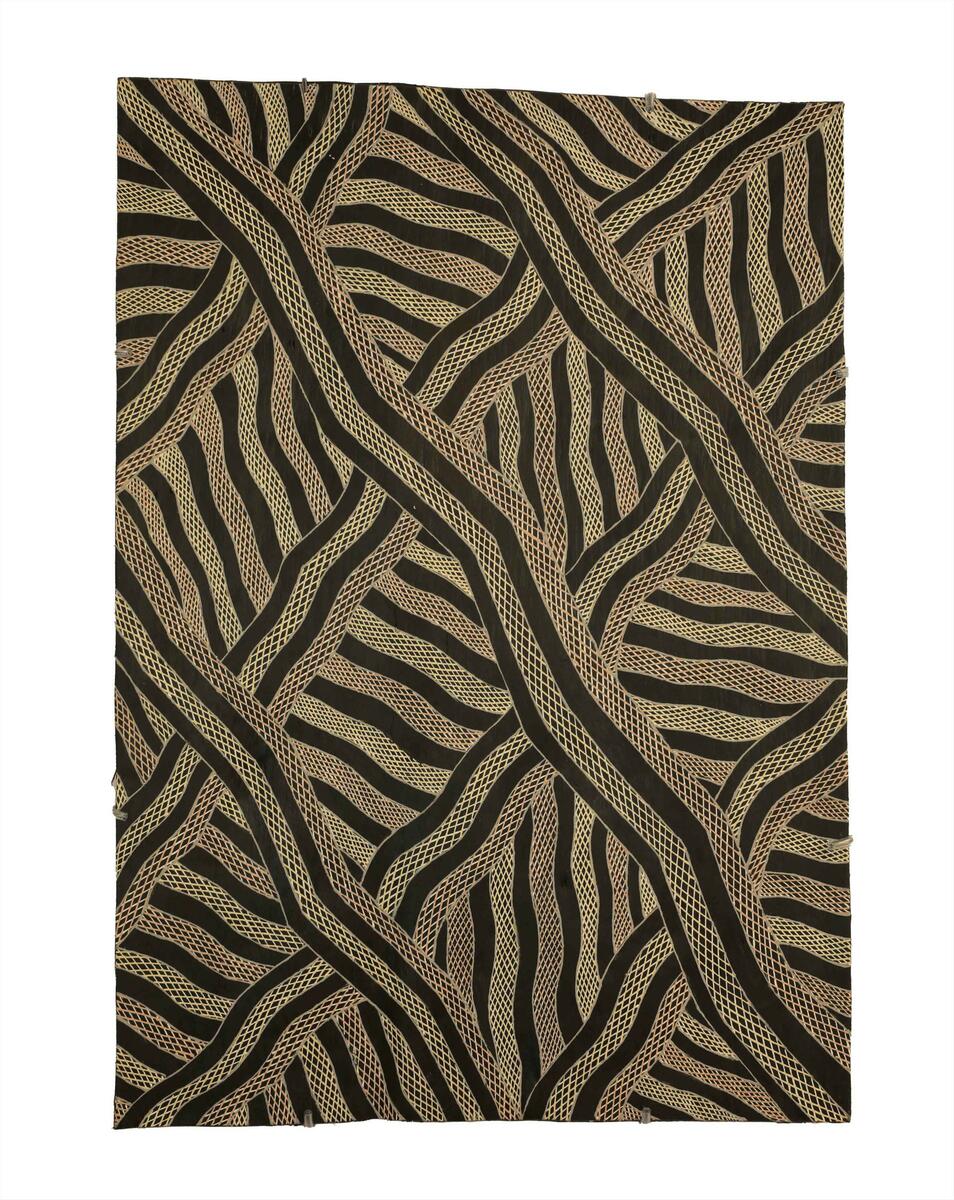
Manini GumanaGarrapara (3766-24) 2024Natural earth pigments on stringy bark76 x 53 cm$3,500.00

Manini GumanaGarrapara (2182-24) 2024Natural earth pigments on stringy bark57 x 49.5 cm$2,500.00
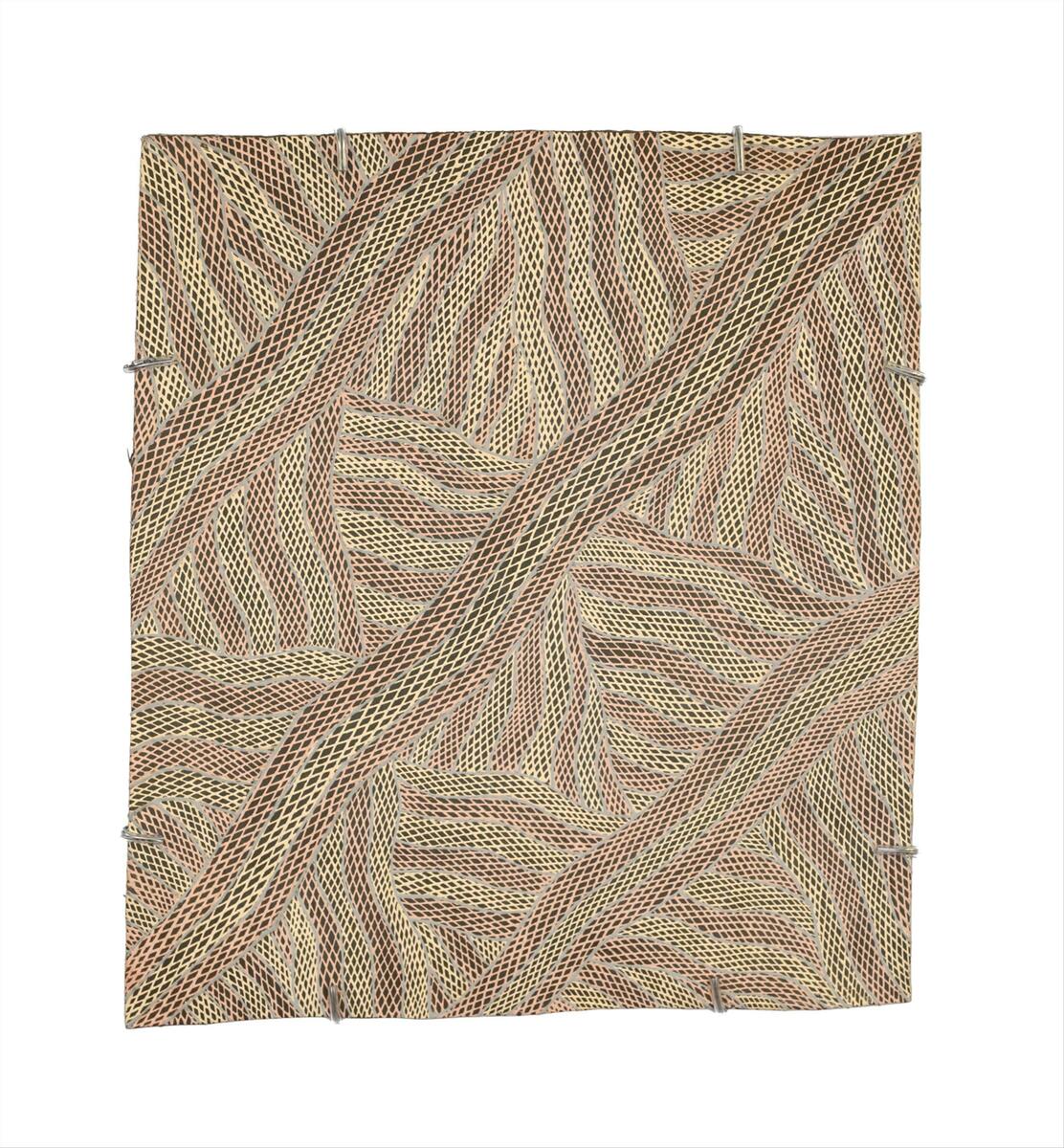
Manini GumanaGarrapara (2181-24) 2024Natural earth pigments on stringy bark56 x 50 cm●●
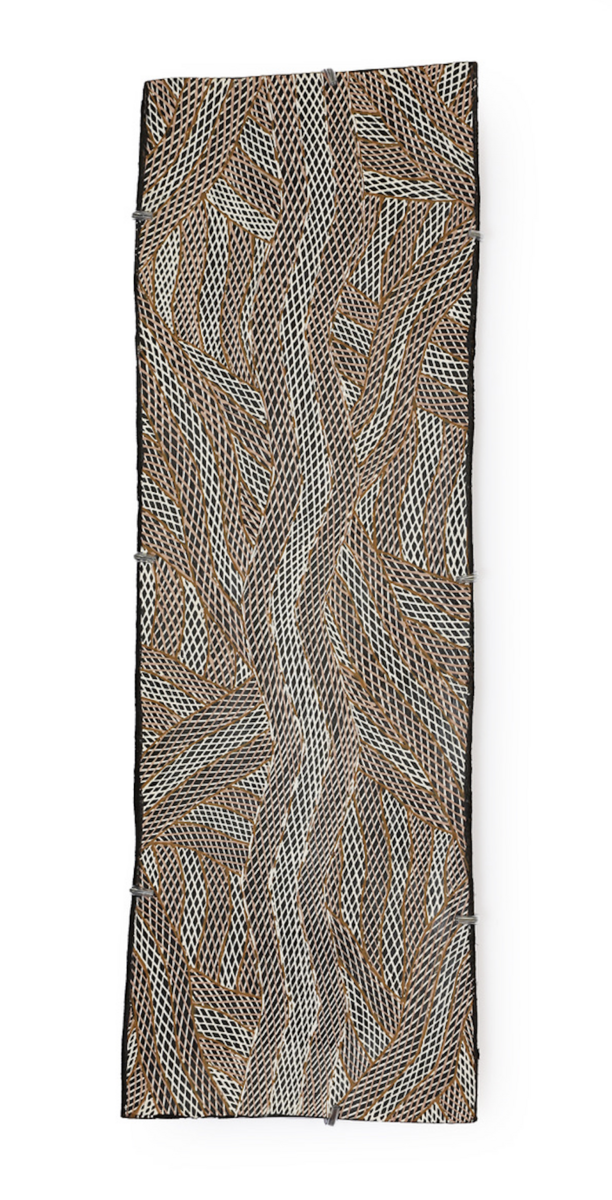
Manini GumanaGarrapara (1714-24) 2024Natural earth pigments on stringy bark78 x 26 cm●●

Manini GumanaGarrapara (3022-23) 2023Natural earth pigments on stringy bark60 x 29 cm●●
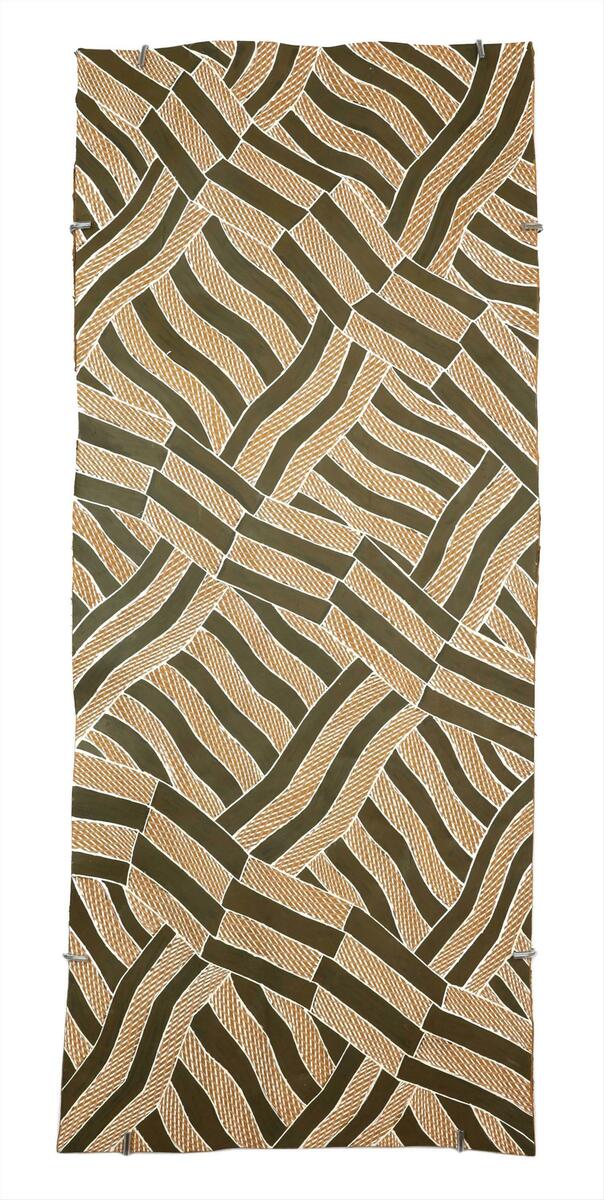
Manini GumanaGarrapara (2188-23) 2023Natural earth pigments on stringy bark90.5 x 37.5 cm$3,200.00
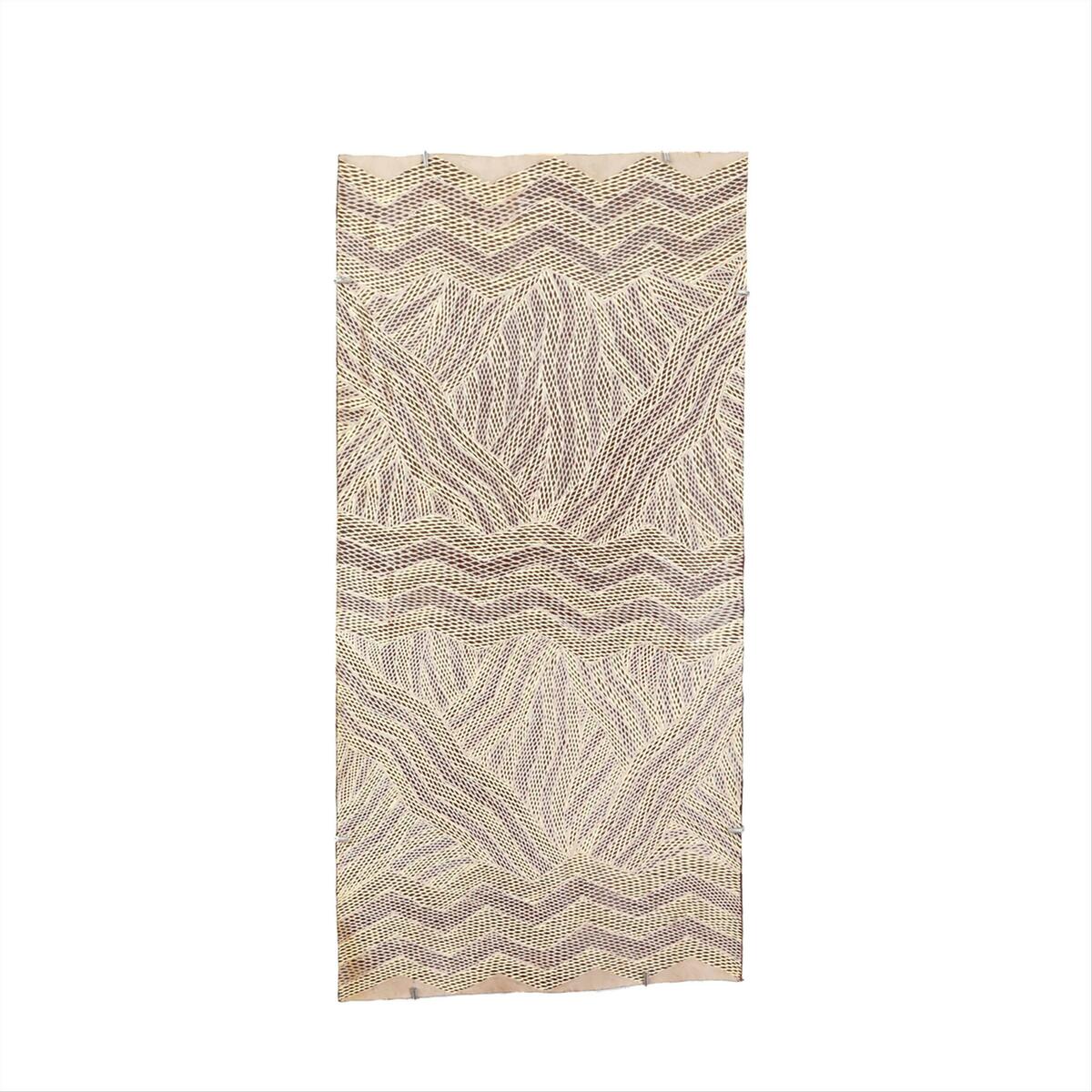
Manini GumanaGarrapara (1322-21) 2021Natural earth pigments on stringy bark91 x 44 cm●●
